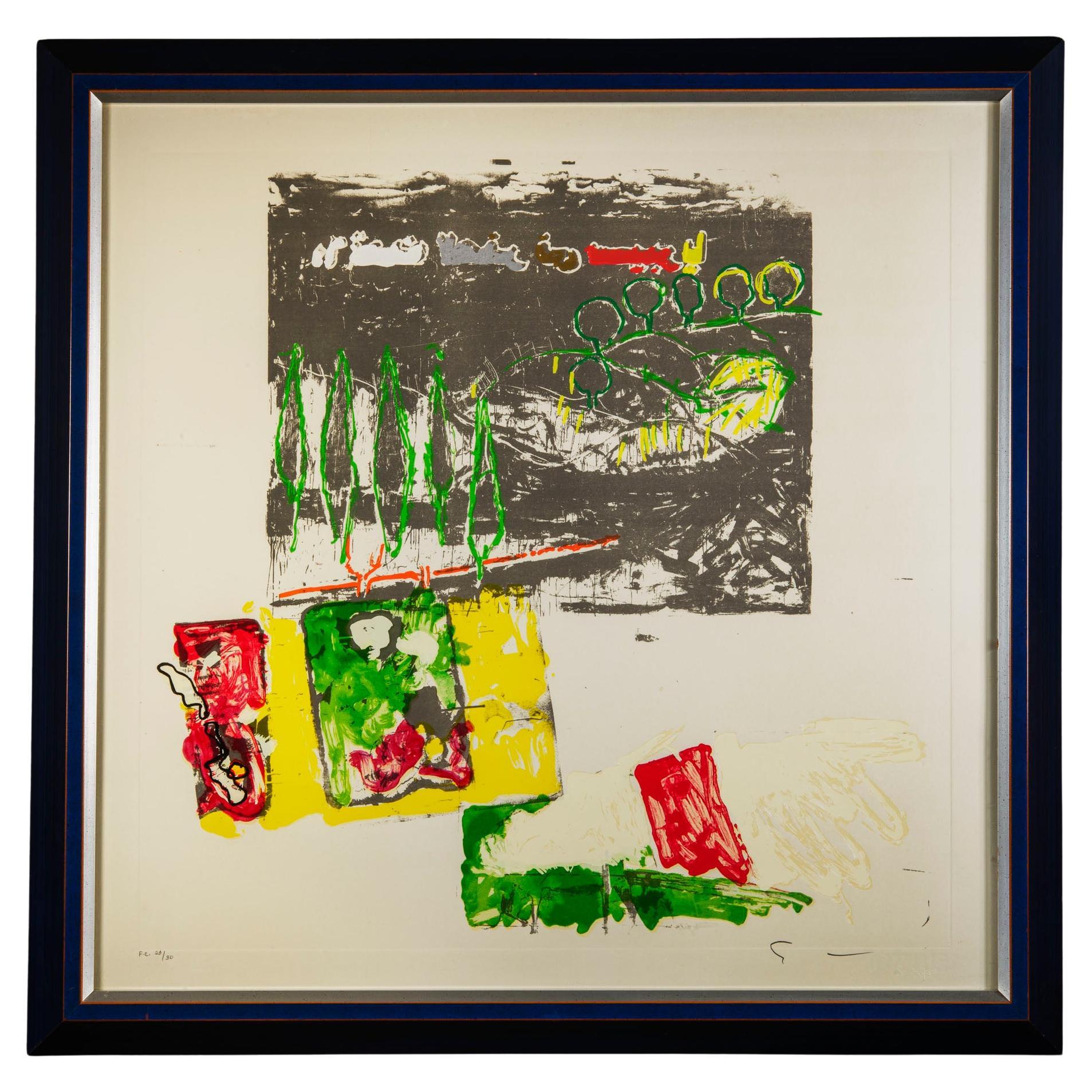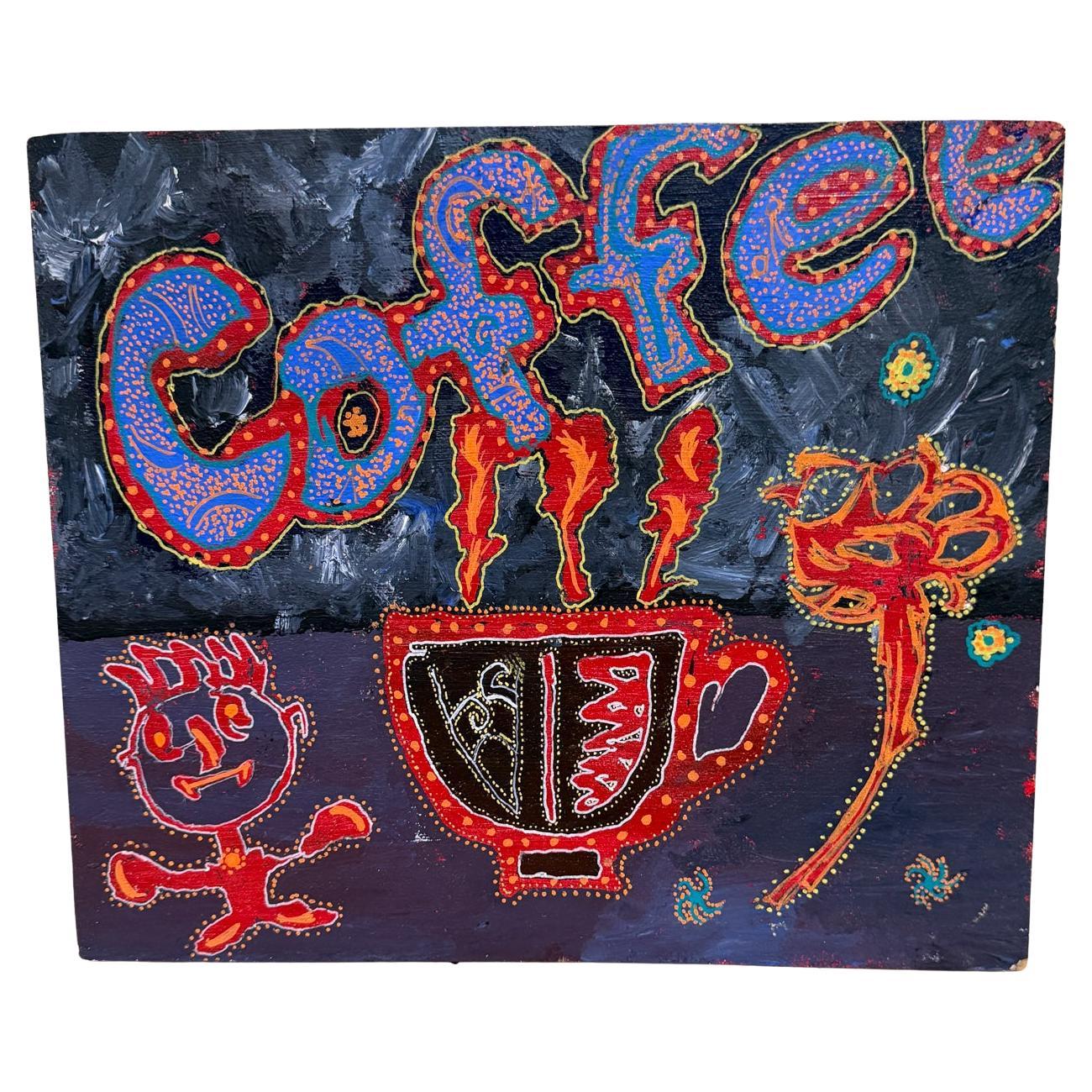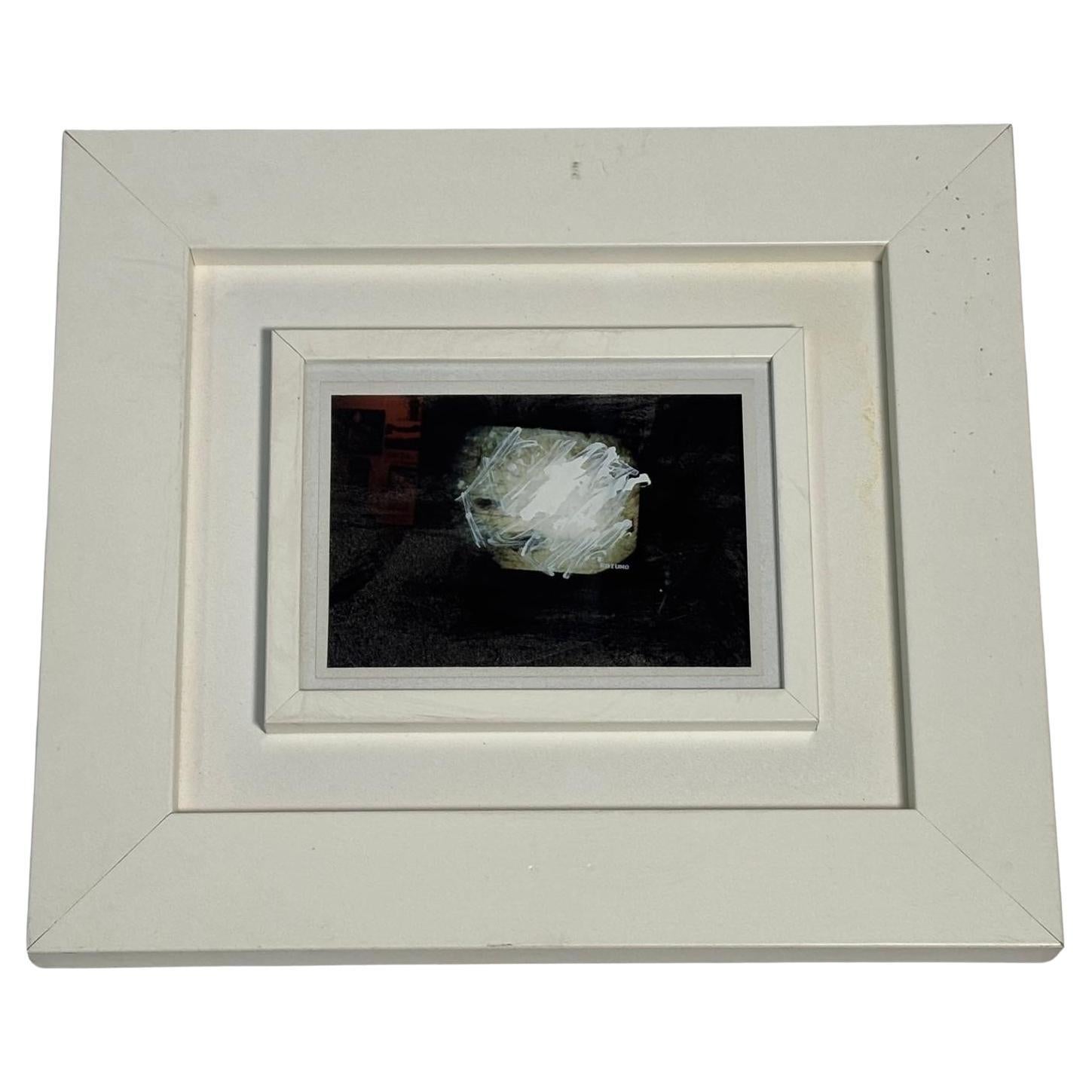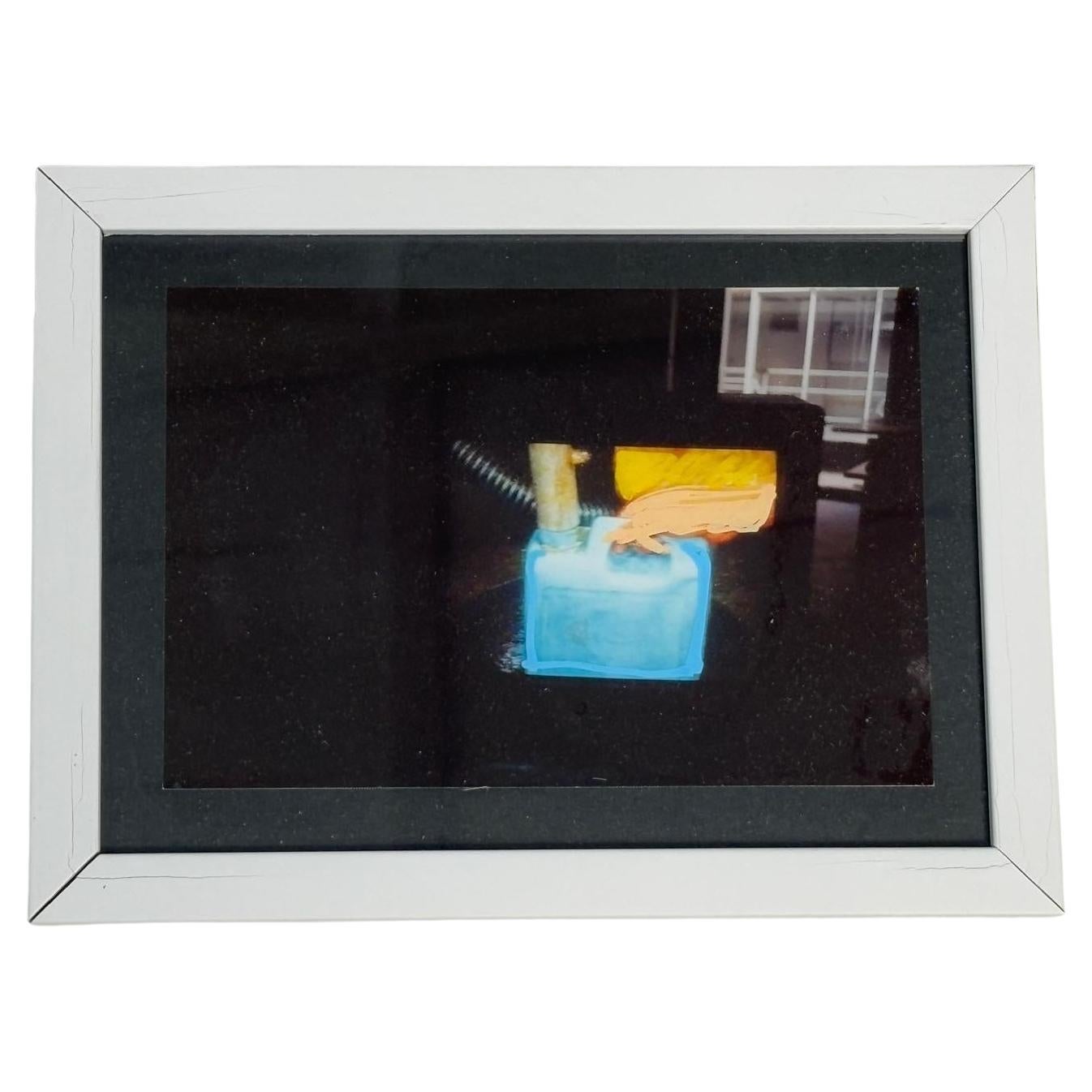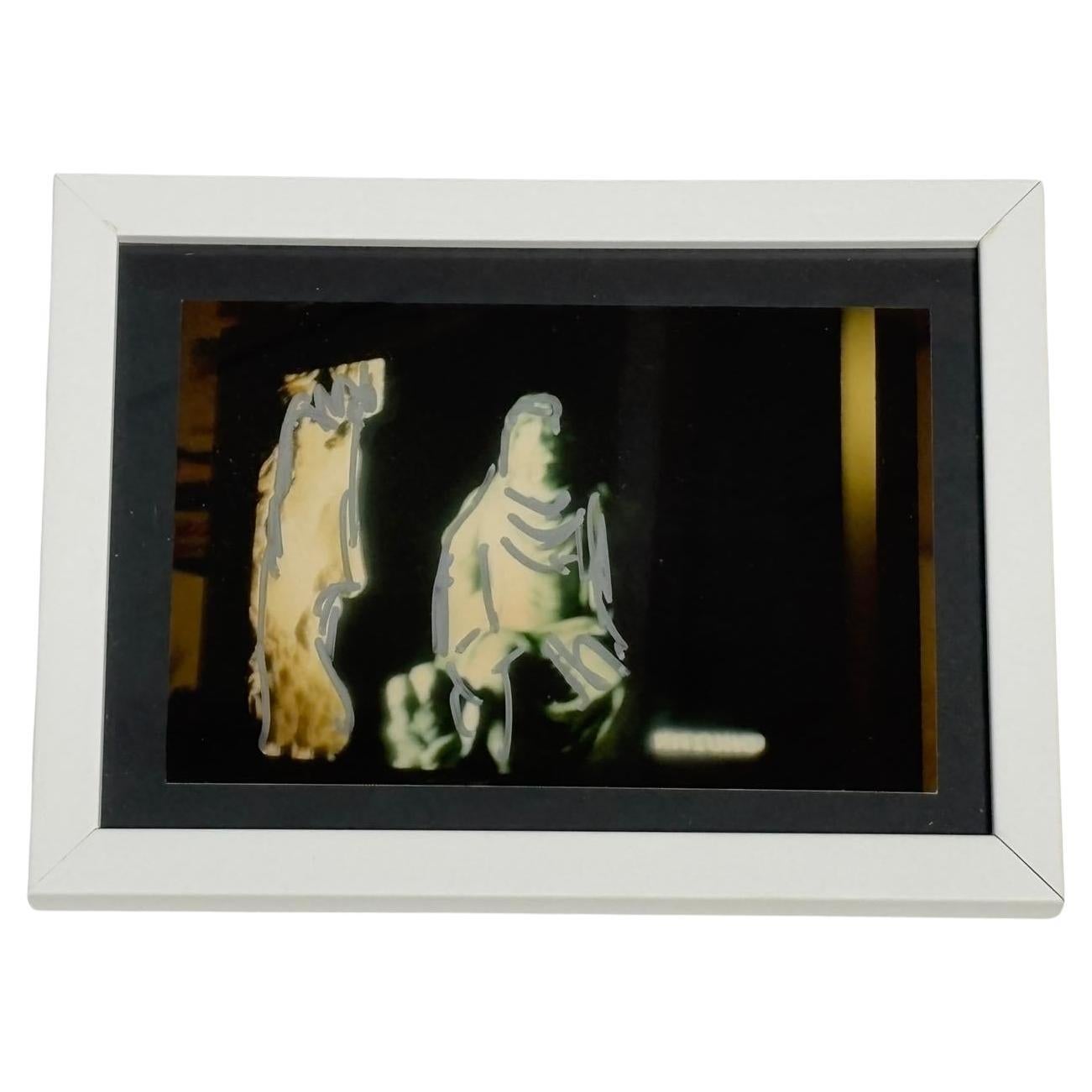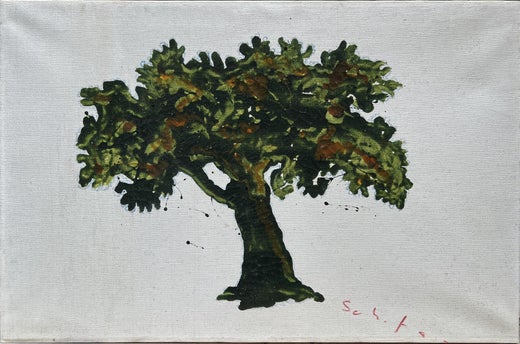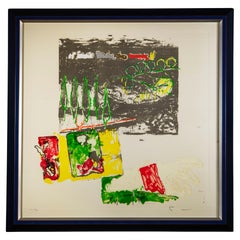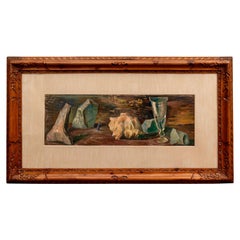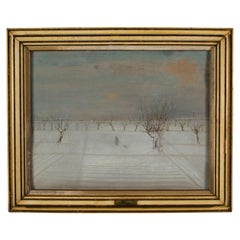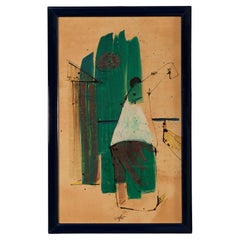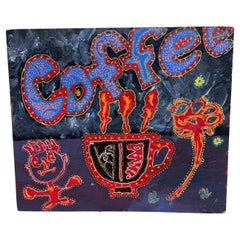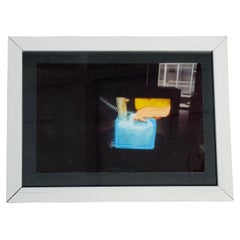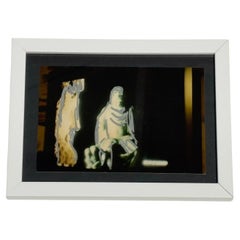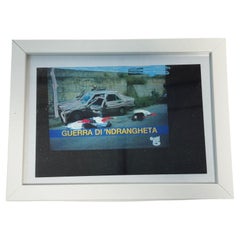Articoli simili a 1990s Signed Mario Schifano Artwork
Vuoi altre immagini o video?
Richiedi altre immagini o video al venditore
1 di 10
1990s Signed Mario Schifano Artwork
Informazioni sull’articolo
Enamel on canvas "Untitled" signature on the back.
Certification by the artist is present.
Archived in 1997 Monte Titano Arte
General Archive of Mario Schifano's paintings n. 713/97 dated 19.09.1997 Monte Titano Arte. Bibliography: the work is present in III° Mario Schifano Works on Canvas 1991-1998 page 401
The dimensions are without frame.
This painting, comes from a private collection and is beautified by an impressive original frame in natural wood, in almost perfect condition.
The painting is also protected by glass
Every item of our Gallery, upon request, is accompanied by a certificate of authenticity issued by Sabrina Egidi official Expert in Italian furniture for the Chamber of Commerce of Rome and for the Rome Civil Courts.
Mario Schifano (Homs 1934 - 1998) was an Italian painter and filmmaker.
Together with Franco Angeli and Tano Festa he represented a fundamental point of Italian and European Pop Art.
Perfectly integrated in the international cultural scene of the 1960s, he was reputed to be a prolific, exuberant and drug-addicted artist.
A keen student of new painting techniques, he was among the first to use computers to create works and was able to process images from the computer and transfer them onto emulsified canvases.
Mario Schifano was born in Italian Libya and after the end of the war returned to Rome where, due to his restless personality, he left school early to follow in his father's footsteps who worked at the Etruscan museum of Villa Giulia as an archaeologist and restorer.
Thanks to this experience, he approached art, initially producing works that were influenced by Informal Art.
His first solo exhibition was at the Galleria Appia Antica in Rome in 1959.
In the late 1950s, he participated in the artistic movement Scuola di Piazza del Popolo together with artists such as Francesco Lo Savio, Mimmo Rotella, Giuseppe Uncini, Giosetta Fioroni, Tano Festa and Franco Angeli.
The group met at Caffè Rosati, a Roman café then frequented by Pier Paolo Pasolini, Alberto Moravia and Federico Fellini, among others, and located in Piazza del Popolo, from which they took their name.
In 1960, the group's works were exhibited in a group show at Galleria La Salita.
In 1961 he exhibited in a solo show at Galleria La Tartarugadi Plinio De Martiis in Rome.
In the meantime, he had met, among others, his future lover Anita Pallenberg at the Caffè Rosati, with whom he made his first trip to New York in 1962, where he came into contact with Andy Warhol and Gerard Malanga at the Factory.
During this period he participated in the New Realists exhibition at the Sidney Janis Gallery, a group show that included most of the young artists of Pop art and Nouveau Réalisme, including Andy Warhol and Roy Lichtenstein.
He then had the opportunity to participate in the New York social scene, which led to his first experiments with LSD.[6]
On his return from New York, after participating in exhibitions in Rome, Paris and Milan, he took part in the XXXII International Art Exhibition in Venice in 1964.
During this period, his paintings defined as 'Anemic Landscapes', in which it is memory that evokes the representation of nature with small details or allusive inscriptions, and the reinterpretations of art history that later led to his famous pictorial works on futurism appear in embryo.
In Rome, he met and frequented Marco Ferreri and Giuseppe Ungaretti to whom, already in his 80s, he offered an evening at Peyote.
But one of the acquaintances of this period that most influenced him was that with Ettore Rosboch, with whom he formed a deep friendship, based on a shared passion for music. In those years, also thanks to their constant trips to London, the two became friends with the Rolling Stones, to whom they introduced Anita Pallenberg, who in 1965 began a relationship with Brian Jones, and years later became Keith Richards' partner.
In 1969, the flat in Piazza in Piscinula in Rome that then belonged to Schifano was used by Ferreri as the set for the film Dillinger is Dead, on the walls of which some of the artist's paintings can be seen.
In 1969, the Rolling Stones dedicated the song Monkey Man to Mario Schifano.
In 1971 some of his paintings were included by Achille Bonito Oliva in the exhibition Vitalità nel negativo nell'arte italiana 1960/70.
Many of his works, the so-called 'monochromes', present only one or two colours, applied on wrapping paper glued on canvas.
The influence of Jasper Johns was manifested in the use of numbers or isolated letters of the alphabet, but in Schifano's way of painting analogies can be traced to the work of Robert Rauschenberg.
In a painting from 1960, one can read the word 'no' painted with drips of colour in large capital letters, as in a wall graffiti.
The influence of Pop art can be seen in all the artistic production of Mario Schifano, who was fascinated by new technologies, advertising, music, photography and experimentation.
In particular, the artist's closest works to Pop Art are those of the 1980s.
Among the most important works of this period are the Propagande, a series dedicated to advertising brands (Coca-Cola and Esso) in which we have a clear example of the conveyance of commonly used and easily recognisable images quoted in multiple ways or details of them, bicycles, flowers and nature in general (among the most famous series are the Paesaggi anemici, Vedute interrotte, L'albero della vita, estinti and Campi di grano).
Among his most recognisable and important works are certainly the emulsion canvases, daughters of those continuous photographic shots that accompanied his entire life, supports on which television images of daily consumption are reproposed, multiple and in a continuous flow with light pictorial interventions.
- Creatore:Mario Schifano (Autore)
- Dimensioni:Altezza: 30 cm (11,82 in)Larghezza: 20 cm (7,88 in)Profondità: 5 cm (1,97 in)
- Stile:Mid-Century moderno (Del periodo)
- Materiali e tecniche:
- Luogo di origine:
- Periodo:1990-1999
- Data di produzione:1997
- Condizioni:Usura compatibile con l’età e l’utilizzo. Lieve sbiadimento.
- Località del venditore:Roma, IT
- Numero di riferimento:1stDibs: LU4827245226372
Mario Schifano
Mario Schifano (1934-1968) è considerato uno degli artisti più significativi del postmodernismo italiano. Nel corso della sua carriera ha lavorato con numerosi mezzi, ma è forse più conosciuto per i suoi collage composti da pubblicità, carta straccia e componenti dipinti. Nella seconda metà della sua carriera, il lavoro di Schifano è diventato sempre più politico, in quanto ha esplorato temi come la guerra del Vietnam e il diffuso disagio sociale attraverso il cinema e la fotografia. Nato nel 1934 in Libia, Schifano e la sua famiglia si trasferirono a Roma dopo la Seconda Guerra Mondiale. Con scarso interesse per la scuola formale, Schifano ha iniziato a dipingere in modo indipendente e a produrre opere a tecnica mista, utilizzando principalmente tele monocromatiche con carta da imballaggio incollata e stencil applicato. Queste opere hanno ottenuto il plauso della critica e sono state seguite da una serie di mostre sia in Italia che negli Stati Uniti. Nel 1962 fu incluso nella mostra New Realists, un'importante collettiva presso la Sidney Janis Gallery di New York insieme ad artisti come Andy Warhol e Roy Lichtenstein. Utilizzando spesso elementi della cultura pop, come loghi di marchi e pubblicità, il suo lavoro è considerato in gran parte nel contesto della Pop Art. Sebbene Schifano sia stato costantemente produttivo e acclamato dalla critica, per la maggior parte della sua vita ha lottato contro la dipendenza dalle droghe, un'abitudine che ha portato a molteplici arresti e che ha portato l'artista a etichettare la sua carriera come "maldoto" (maledetta). Morì all'età di 63 anni a Roma nel 1998 (Ref: Sotheby's). Le sue opere d'arte sono state vendute per oltre 1M€ da Sotheby's.
Informazioni sul venditore
5,0
Venditore Platino
Venditori Premium con valutazione 4.7+ e tempi di risposta entro 24 ore
Fondazione nel 2005
Venditore 1stDibs dal 2019
89 vendite su 1stDibs
Tempo di risposta standard: 2 ore
- SpedizioneRecupero del preventivo…Spedizione da: Rome, Italia
- Politica di reso
Alcune parti di questa pagina sono state tradotte automaticamente. 1stDibs non può garantire che le traduzioni siano corrette. L’inglese è la lingua predefinita del sito.
Garanzia di autenticità
Nell’improbabile caso in cui si verifichi un problema con l’autenticità di un articolo, contattaci entro un anno per ottenere un rimborso completo. DettagliGaranzia di rimborso
Se il tuo articolo non corrisponde alla descrizione, è danneggiato durante il trasporto o non arriva, contattaci entro 7 giorni per un rimborso completo. DettagliAnnullamento entro 24 ore
Hai un periodo di tolleranza di 24 ore per annullare il tuo acquisto, senza necessità di fornire spiegazioni.Venditori professionali selezionati
I nostri venditori di livello internazionale devono aderire a rigorosi standard di servizio e qualità, garantendo l’integrità delle inserzioni.Garanzia miglior prezzo
Se scopri che un venditore ha pubblicato altrove lo stesso articolo a un prezzo più basso, applicheremo lo stesso prezzo.Consegna globale affidabile
La nostra rete di vettori leader del settore offre opzioni di spedizione specializzate in tutto il mondo, inclusa la consegna personalizzata.Altro da questo venditore
Mostra tuttoOpera d'arte su carta di Mario Schifano firmata negli anni '80
Di Mario Schifano
Serigrafia Mater "Ondate di gelo" di Mario Schifano.
Firma e numerazione a matita sul lato anteriore.
Timbro a secco dell'artista sul fronte.
Edition F.C. (Non in vendita) 23/30. ...
Categoria
Vintage, Anni 1980, Italiano, Mid-Century moderno, Stampe
Materiali
Tela, Vetro, Legno
Mario Tozzi Natura morta italiana di metà secolo firmata e archiviata
Di Mario Tozzi
Opera autenticata di Mario Tozzi
Natura morta con figurina smarrita", un'opera inedita sul mercato, firmata Mario Tozzi in alto a destra.
Rappresenta una delle opere del periodo 19...
Categoria
Metà XX secolo, Italiano, Mid-Century moderno, Dipinti
Materiali
Tela, Legno
Pittura di paesaggio d'epoca italiana firmata
Di Demetrio Tabacco
Il grande storico dell'arte Federico Zeri diceva che dipingere paesaggi innevati è una delle cose più complicate per un artista.
Ebbene, in questo paesaggio della campagna piemontese...
Categoria
Metà XX secolo, Italiano, Mid-Century moderno, Dipinti
Materiali
Tela, Legno
1960 Italiano Firmato Pittura astratta
Di Nino Caffè
Nino Caffè, pittura su carta, tecnica mista.
"Vestizione di un prete" (Vestizione di un giovane prete)
Firmato in basso al centro: Caffè.
I giovani preti nella Roma degli anni '50...
Categoria
Vintage, Anni 1960, Italiano, Mid-Century moderno, Dipinti
Materiali
Legno, Carta
Ritratto italiano degli anni '40 con cornice firmata
Di Orazio Amato
Importante, meraviglioso dipinto firmato dal famoso artista italiano Orazio Amato
Ritratto di giovane donna con paesaggio, olio su tela firmato
Quest'opera d'arte, mai presentata p...
Categoria
Vintage, Anni 1940, Italiano, Mid-Century moderno, Dipinti
Materiali
Tela, Legno
Pittura francese moderna firmata Marin
Di Moya Dyring
Bellissimo e suggestivo dipinto a olio della grande artista moderna di scuola francese Moya Dyring, specializzata in porti turistici.
Raffigura un porto con barche probabilmente dell...
Categoria
Vintage, Anni 1950, Francese, Mid-Century moderno, Dipinti
Materiali
Legno
Ti potrebbe interessare anche
Opera d'arte degli anni '90 Pittura con caffè caldo
AMBIANIC presenta
Pittura d'epoca Coffee Art
Pop Art divertente e favolosa
acrilico su tavola
10.13 x 12 x .3/16
Usato d'epoca
Fai riferimento alle immagini
Categoria
Fine XX secolo, Americano, Moderno, Dipinti
Materiali
Pittura
Fotografia ritoccata a mano da Mario Schifano
Di Mario Schifano
Senza titolo tecnica mista su fotografia di Mario Schifano realizzata nel 1990-97.
Iscrizione sul retro: firma "Schifano".
Con certificato di autenticità. Pezzo unico.
Biografia
Al...
Categoria
Anni 1990, Italiano, Moderno, Fotografia
Materiali
Acrilico
Fotografia ritoccata a mano da Mario Schifano
Di Mario Schifano
Senza titolo tecnica mista su fotografia di Mario Schifano realizzata nel 1990-97.
Iscrizione sul retro: firma "Schifano".
Con certificato di autenticità.
Biografia
All'inizio degli...
Categoria
Anni 1990, Italiano, Moderno, Fotografia
Materiali
Acrilico
Fotografia ritoccata a mano da Mario Schifano
Di Mario Schifano
Senza titolo tecnica mista su fotografia di Mario Schifano realizzata nel 1990-97.
Iscrizione sul retro: firma "Schifano".
Con certificato di autenticità. Pezzo unico.
Biografia
Al...
Categoria
Anni 1990, Italiano, Moderno, Fotografia
Materiali
Acrilico
Fotografia ritoccata a mano da Mario Schifano
Di Mario Schifano
Senza titolo tecnica mista su fotografia di Mario Schifano realizzata nel 1990-97.
Iscrizione sul retro: firma "Schifano".
Con certificato di autenticità. Pezzo unico.
Biografia
Al...
Categoria
Anni 1990, Italiano, Moderno, Fotografia
Materiali
Acrilico
Mario Schifano "Acerbi" Serigrafia materica con cornice
Di Mario Schifano
Mario Schifano
"Acerbi"
Anno: anni '90
Mezzo di comunicazione: Serigrafia materica
Edizione: 99/199
Dimensioni della cornice: 110 x 80 x 5 cm
Firmato e numerato.
Categoria
Anni 1990, Italiano, Moderno, Arte contemporanea
Materiali
Legno, Carta
